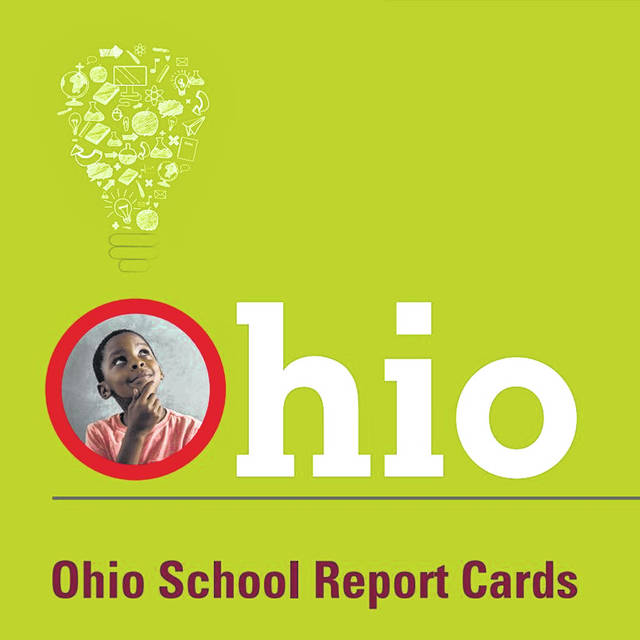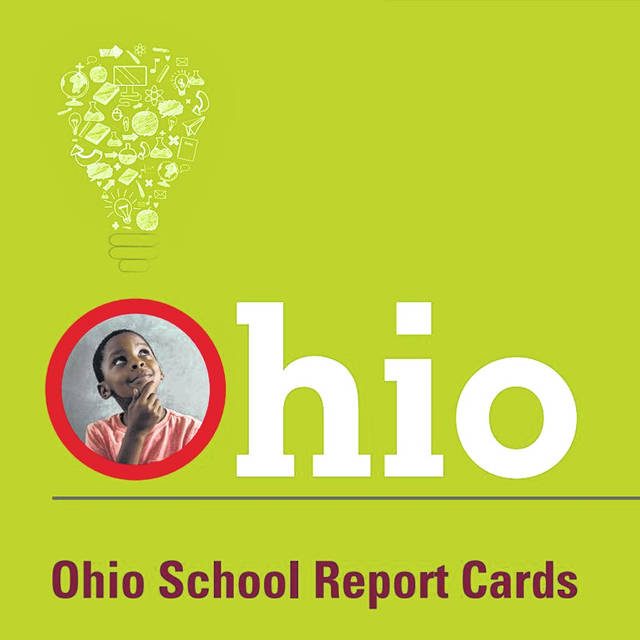



COLUMBUS — The overall Ohio school report card grades of the four school districts in Clinton County ranged from Clinton-Massie’s B to Wilmington’s D, with Blanchester and East Clinton each with a C.
Released Thursday by the Ohio Department of Education, these are the first report cards issued with an overall grade.
The grades are based upon a formula weighing 20 percent for achievement, 20 percent for progress and 15 percent each for closing gaps, graduation rates, kindergarten through third-grade literacy and prepared for success measures.
Leaders weigh in
Clinton-Massie Superintendent Matt Baker told the News Journal Thursday, “We are very happy with the advancements we have made in the State Report Card over the last few years. We are so proud that our students and staff can continue to move the district forward under our current financial constraints.
“We increased by one letter grade forward or stood steady in five out of six categories. We have also increased our indicators met by 33 percent over the last two testing cycles. This is quite a feat considering we have cut close to one million dollars in personnel and curriculum costs in the last twenty-four months.
“We will continue to support students and staff so that we can become a “Destination District” for Southwest Ohio. Thank you Falcon Family for your hard work!” Baker added.
Wilmington Superintendent Mindy McCarty-Stewart said, “Wilmington City Schools is on the right path for making the gains in student achievement and progress as measured on the State Report Card. We are a school community that embraces the needs of all students in effective ways that are not measured by the state.
“Many graduates from Wilmington are leading successful lives in their college and career paths. Wilmington students of all ages demonstrate amazing acts of kindness, and problem solving skills every day.
“Our district offers rich learning opportunities. WCS is known for our top-notch performing and visual arts program. Our high school has implemented the fourth course in our Engineering Project Lead The Way Program this year. Wilmington students are able to take six different College Board Advanced Placement Courses, the highest amount of AP offerings in our county. In addition to the AP courses, we have several College Prep Classes offered at the high school.
“Wilmington provides opportunities for our students to apply relevant learning opportunities by taking advantage of our full time Agricultural Education Program. Students are also able to experience internship opportunities with our Peers Helping Peers and Technology Integration programs. Our district is fortunate to have strong community and Board of Education support that allows these learning opportunities to happen for the students of Wilmington,” she said.
“What is also not measured on our State Report Card are our strong community partnerships. The students of Wilmington City Schools are fortunate to partner with many of our active civic groups such as Clinton County Leadership Collaborative, Rotary, Kiwanis, and our Homeless Shelter Coalition. The Wilmington City Schools Foundation provides resources that allow our teachers to go above and beyond in teaching our students. Our WCS Diversity Committee is active with community leaders that help promote our district’s commitment to an inclusive educational experience for each and every student. The Wilmington school experience is strengthened by our community partners.
“The Ohio Department of Education has established benchmarks and measures, and our staff and students are working hard to meet and exceed those standards. Wilmington City Schools has a strong focus on our three year plan to increase opportunities for learning. Our daily instruction is focused on academic literacy, Universal Design for Learning, creating effective systems of assessment, using Positive Behavior Supports, and improving student attendance.
“In addition to our focused district plan, we have increased support for students at the Middle and High School. We have added the Wilmington Success Academy at the High School to improve graduation rates. The facilitator of this class will work specifically with students who are at risk of not graduating. We’ve also added an additional counselor that will work with our 8th and 9th grade students to help keep students on target as they migrate from the Middle School to the High School. The measures we are taking toward improving our graduation rates will also have a positive impact on our Progress and Prepared for Success numbers.
“Our elementary buildings have dedicated teaching teams that are collaborating and challenging each other to improve the level of instruction and ensure consistency in education for all of our students. Our elementary schools are focused on expanding the rigor in the classroom and ensuring that each student progresses in their academic skills.
“On a District level, we are now able to provide more school-based counseling services through a partnership with Solutions. Carol Peterson joins us from Solutions as our District Prevention Coordinator. There are many barriers to education, and having extra counseling supports along with our caring staff will help keep students on track for graduation and a successful future.
“Across the District, we are increasing our focus on improving attendance rates. The chronic absenteeism rate continues to be a barrier to improving student achievement. We can best educate students if they come to school on a regular basis. Many students and parents don’t realize that missing just 2 or 3 days a month, excused or unexcused, can impact their child’s progress at school both academically and socially. Our hope is that parents, business leaders, churches, organizations, and community members will all pull together to help us teach our students that strong attendance is a vital part of learning and having a successful future.
“For more information on the impact of student absences and how you can help, visit attendanceworks.org.
“We are committed to continuously working to improve the quality of education at WCS and look forward to working with students, parents, and the community to help each and every student succeed at WCS and beyond,” McCarty-Stewart said.
Blanchester Superintendent Dean Lynch said, “Two of the most important components on the State Report Card are the K-3 Literacy and Graduation Rate measures. These two components measure the achievement at both ends of the educational assessment spectrum; from a child’s start in elementary school to their graduation 12 or 13 years later.
“Blanchester performed well on these two measurements, receiving a B in both components. K-3 Literacy received a 66.7% and our 5-year Graduation Rate received 95.8%; both grades were among the highest in our region.
“These two grades reflect the strong educational experience our students receive here at Blanchester. Starting from pre-kindergarten through their senior year, students they are being taught by a solid group of professionals (teachers and building administrators) who communicate with each other up and down the grade bands throughout the school year and take tremendous pride in their work as they prepare students for the next grade level.
“Opportunities to Improve would be the Achievement Component (Grade D) and the Prepared for Success Component (Grade F). All but one of the schools in our region received an F in the Prepared for Success Component. And in the Achievement Component all no school received an A or B.
“With these results, both measurements bring into question the validity and reliability of the assessments,” Lynch said.
East Clinton Superintendent Eric Magee told the News Journal, “East Clinton will always look to improve the teaching and learning that occurs on a daily basis. Ohio’s report card provides a wealth of data that assists in making progress.
“East Clinton’s teachers work hard every day to meet the needs of our students. Some of that can be measured on the report card. Some of it is not measured by the state’s report card.
“‘Kids first’ will always be our mindset. We will use this information from the state to guide our improvement efforts. We want to grow our students into champions in all their efforts and ambassadors in all their interactions with others.
“Improvements have been gained as documented by the report card. We will continue to strive for excellence and to better ourselves in all that we do.”
Disparities
“Today’s state report card data shows that a disturbing pattern continues,” said Dr. Howard Fleeter of the Ohio Education Policy Institute in a Thursday press release from the Ohio Schools Boards Association. “Economically disadvantaged students continue to perform far worse than noneconomically disadvantaged students on all measures. These results track with the recent study of the state’s school-funding efforts since the landmark Ohio Supreme Court DeRolph decision, which found disparities for low-wealth districts continue to exist two decades later.
“Districts whose Performance Index is below 70 have an average of 88.1% economically disadvantaged students and districts who performance index is above 100 have an average of only 11% economically disadvantaged students.”
All the state’s report cards may be found at https://www.limaohio.com/reportcards .
Local districts’ grades are grades are:
WILMINGTON
Overall grade — D
Achievement component grade — D
Performance index grade component — D
Indicators met grade — F
Progress component grade — C
Overall value-added grade — C
Gifted value-added grade — D
Lowest 20% value-added grade — B
Students with disabilities value-added grade — C
Gap closing grade F Graduation component grade — C
4-year graduation rate grade — D
5-year graduation rate grade — C
Improving at-risk K-3 readers component grade — C
Prepared for success component grade — F
CLINTON-MASSIE
Overall grade — B
Achievement component grade — C
Performance index grade component — C
Indicators met grade — D
Progress component grade — B
Overall value-added grade — A
Gifted value-added grade — C
Lowest 20% value-added grade — A
Students with disabilities value-added grade — C
Gap closing grade B Graduation component grade — A
4-year graduation rate grade — A
5-year graduation rate grade — B
Improving at-risk K-3 readers component grade — B
Prepared for success component grade — D
BLANCHESTER
Overall grade: C
Achievement component grade — D
Performance index grade component — C
Indicators met grade — F
Progress component grade — B
Overall value-added grade — B
Gifted value-added grade — C
Lowest 20% value-added grade — C
Students with disabilities value-added grade — C
Gap closing grade — B
Graduation component grade — B
4-year graduation rate grade — B
5-year graduation rate grade — A
Improving at-risk K-3 readers component grade — B
Prepared for success component grade — F
EAST CLINTON
Overall grade — C
Achievement component grade — D
Performance index grade component — C
Indicators met grade — F
Progress component grade — B
Overall value-added grade — B
Gifted value-added grade — B
Lowest 20% value-added grade — C
Students with disabilities value-added grade — F
Gap closing grade — B
Graduation component grade — B
4-year graduation rate grade — C
5-year graduation rate grade — B
Improving at-risk K-3 readers component grade — D
Prepared for success component grade — F


